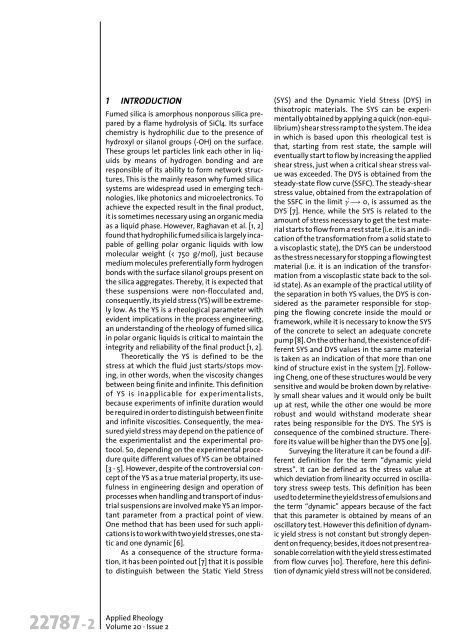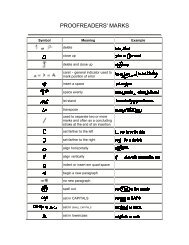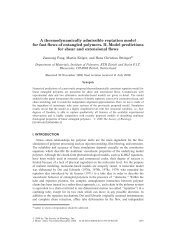Static and Dynamic Yield Stresses of Aerosil® 200 Suspensions in ...
Static and Dynamic Yield Stresses of Aerosil® 200 Suspensions in ...
Static and Dynamic Yield Stresses of Aerosil® 200 Suspensions in ...
You also want an ePaper? Increase the reach of your titles
YUMPU automatically turns print PDFs into web optimized ePapers that Google loves.
1 INTRODUCTION<br />
Fumed silica is amorphous nonporous silica prepared<br />
by a flame hydrolysis <strong>of</strong> SiCl4. Its surface<br />
chemistry is hydrophilic due to the presence <strong>of</strong><br />
hydroxyl or silanol groups (-OH) on the surface.<br />
These groups let particles l<strong>in</strong>k each other <strong>in</strong> liquids<br />
by means <strong>of</strong> hydrogen bond<strong>in</strong>g <strong>and</strong> are<br />
responsible <strong>of</strong> its ability to form network structures.<br />
This is the ma<strong>in</strong>ly reason why fumed silica<br />
systems are widespread used <strong>in</strong> emerg<strong>in</strong>g technologies,<br />
like photonics <strong>and</strong> microelectronics. To<br />
achieve the expected result <strong>in</strong> the f<strong>in</strong>al product,<br />
it is sometimes necessary us<strong>in</strong>g an organic media<br />
as a liquid phase. However, Raghavan et al. [1, 2]<br />
found that hydrophilic fumed silica is largely <strong>in</strong>capable<br />
<strong>of</strong> gell<strong>in</strong>g polar organic liquids with low<br />
molecular weight (< 750 g/mol), just because<br />
medium molecules preferentially form hydrogen<br />
bonds with the surface silanol groups present on<br />
the silica aggregates. Thereby, it is expected that<br />
these suspensions were non-flocculated <strong>and</strong>,<br />
consequently, its yield stress (YS) will be extremely<br />
low. As the YS is a rheological parameter with<br />
evident implications <strong>in</strong> the process eng<strong>in</strong>eer<strong>in</strong>g,<br />
an underst<strong>and</strong><strong>in</strong>g <strong>of</strong> the rheology <strong>of</strong> fumed silica<br />
<strong>in</strong> polar organic liquids is critical to ma<strong>in</strong>ta<strong>in</strong> the<br />
<strong>in</strong>tegrity <strong>and</strong> reliability <strong>of</strong> the f<strong>in</strong>al product [1, 2].<br />
Theoretically the YS is def<strong>in</strong>ed to be the<br />
stress at which the fluid just starts/stops mov<strong>in</strong>g,<br />
<strong>in</strong> other words, when the viscosity changes<br />
between be<strong>in</strong>g f<strong>in</strong>ite <strong>and</strong> <strong>in</strong>f<strong>in</strong>ite. This def<strong>in</strong>ition<br />
<strong>of</strong> YS is <strong>in</strong>applicable for experimentalists,<br />
because experiments <strong>of</strong> <strong>in</strong>f<strong>in</strong>ite duration would<br />
be required <strong>in</strong> order to dist<strong>in</strong>guish between f<strong>in</strong>ite<br />
<strong>and</strong> <strong>in</strong>f<strong>in</strong>ite viscosities. Consequently, the measured<br />
yield stress may depend on the patience <strong>of</strong><br />
the experimentalist <strong>and</strong> the experimental protocol.<br />
So, depend<strong>in</strong>g on the experimental procedure<br />
quite different values <strong>of</strong> YS can be obta<strong>in</strong>ed<br />
[3 - 5]. However, despite <strong>of</strong> the controversial concept<br />
<strong>of</strong> the YS as a true material property, its usefulness<br />
<strong>in</strong> eng<strong>in</strong>eer<strong>in</strong>g design <strong>and</strong> operation <strong>of</strong><br />
processes when h<strong>and</strong>l<strong>in</strong>g <strong>and</strong> transport <strong>of</strong> <strong>in</strong>dustrial<br />
suspensions are <strong>in</strong>volved make YS an important<br />
parameter from a practical po<strong>in</strong>t <strong>of</strong> view.<br />
One method that has been used for such applications<br />
is to work with two yield stresses, one static<br />
<strong>and</strong> one dynamic [6].<br />
As a consequence <strong>of</strong> the structure formation,<br />
it has been po<strong>in</strong>ted out [7] that it is possible<br />
to dist<strong>in</strong>guish between the <strong>Static</strong> <strong>Yield</strong> Stress<br />
(SYS) <strong>and</strong> the <strong>Dynamic</strong> <strong>Yield</strong> Stress (DYS) <strong>in</strong><br />
thixotropic materials. The SYS can be experimentally<br />
obta<strong>in</strong>ed by apply<strong>in</strong>g a quick (non-equilibrium)<br />
shear stress ramp to the system. The idea<br />
<strong>in</strong> which is based upon this rheological test is<br />
that, start<strong>in</strong>g from rest state, the sample will<br />
eventually start to flow by <strong>in</strong>creas<strong>in</strong>g the applied<br />
shear stress, just when a critical shear stress value<br />
was exceeded. The DYS is obta<strong>in</strong>ed from the<br />
steady-state flow curve (SSFC). The steady-shear<br />
stress value, obta<strong>in</strong>ed from the extrapolation <strong>of</strong><br />
the SSFC <strong>in</strong> the limit g·ô 0, is assumed as the<br />
DYS [7]. Hence, while the SYS is related to the<br />
amount <strong>of</strong> stress necessary to get the test material<br />
starts to flow from a rest state (i.e. it is an <strong>in</strong>dication<br />
<strong>of</strong> the transformation from a solid state to<br />
a viscoplastic state), the DYS can be understood<br />
as the stress necessary for stopp<strong>in</strong>g a flow<strong>in</strong>g test<br />
material (i.e. it is an <strong>in</strong>dication <strong>of</strong> the transformation<br />
from a viscoplastic state back to the solid<br />
state). As an example <strong>of</strong> the practical utility <strong>of</strong><br />
the separation <strong>in</strong> both YS values, the DYS is considered<br />
as the parameter responsible for stopp<strong>in</strong>g<br />
the flow<strong>in</strong>g concrete <strong>in</strong>side the mould or<br />
framework, while it is necessary to know the SYS<br />
<strong>of</strong> the concrete to select an adequate concrete<br />
pump [8]. On the other h<strong>and</strong>, the existence <strong>of</strong> different<br />
SYS <strong>and</strong> DYS values <strong>in</strong> the same material<br />
is taken as an <strong>in</strong>dication <strong>of</strong> that more than one<br />
k<strong>in</strong>d <strong>of</strong> structure exist <strong>in</strong> the system [7]. Follow<strong>in</strong>g<br />
Cheng, one <strong>of</strong> these structures would be very<br />
sensitive <strong>and</strong> would be broken down by relatively<br />
small shear values <strong>and</strong> it would only be built<br />
up at rest, while the other one would be more<br />
robust <strong>and</strong> would withst<strong>and</strong> moderate shear<br />
rates be<strong>in</strong>g responsible for the DYS. The SYS is<br />
consequence <strong>of</strong> the comb<strong>in</strong>ed structure. Therefore<br />
its value will be higher than the DYS one [9].<br />
Survey<strong>in</strong>g the literature it can be found a different<br />
def<strong>in</strong>ition for the term “dynamic yield<br />
stress”. It can be def<strong>in</strong>ed as the stress value at<br />
which deviation from l<strong>in</strong>earity occurred <strong>in</strong> oscillatory<br />
stress sweep tests. This def<strong>in</strong>ition has been<br />
used to determ<strong>in</strong>e the yield stress <strong>of</strong> emulsions <strong>and</strong><br />
the term “dynamic” appears because <strong>of</strong> the fact<br />
that this parameter is obta<strong>in</strong>ed by means <strong>of</strong> an<br />
oscillatory test. However this def<strong>in</strong>ition <strong>of</strong> dynamic<br />
yield stress is not constant but strongly dependent<br />
on frequency; besides, it does not present reasonable<br />
correlation with the yield stress estimated<br />
from flow curves [10]. Therefore, here this def<strong>in</strong>ition<br />
<strong>of</strong> dynamic yield stress will not be considered.<br />
22787-2<br />
Applied Rheology<br />
Volume 20 · Issue 2





